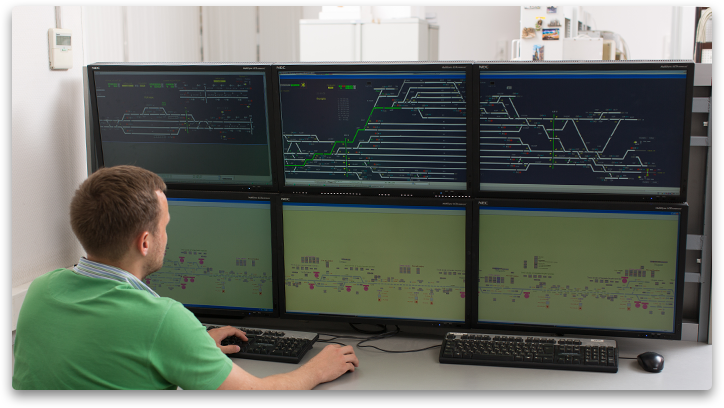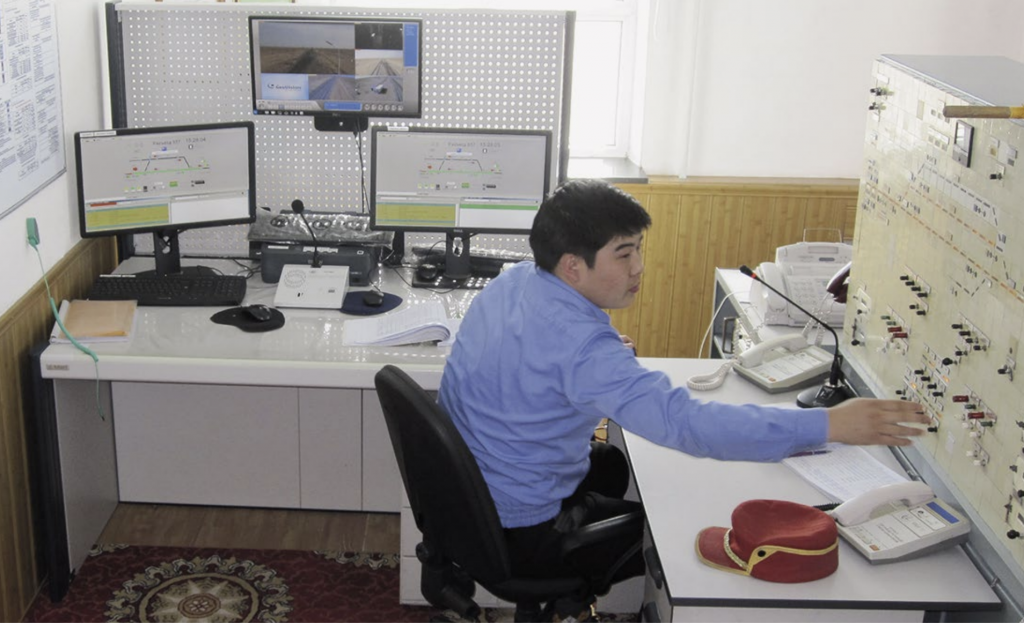HIGH OPERATIONAL AVAILABILITY
CTC system offers a full hot standby of the equipment (servers, train dispatchers’ local control supervisory systems (LCSS)) and communication channels. The system architecture allows creating geographically distributed standby centers of centralized traffic control (for example, with distribution on both ends of the section).
Functional safety is provided on the level of the central processor and CBI object controllers, which reduces requirements to the equipment of dispatching control and telecommunication system and allows increasing cost effectiveness of CTC implementation.
HIGHLY SCALABLE SYSTEM
The capacity of CTC is not limited and is determined by the convenience of the system administration. Connection of the CBI system to CTC is in no way different from connection to a LCSS. LCSS becomes one of the components of CTC – the station duty officer receives the same information as the train dispatcher (including the numbers of trains and train sheets). They are also able to control notifications about the state of the objects on the mnemonic circuit and add text notes to the general event log, etc. It is also possible to equip LCSS for signaling dispatchers and power dispatchers in the traffic control center. There is an option for the CTC interface with a radio block center.
LOW OPERATING COSTS
When using CTC on sections equipped with the CBI system and relay-based (RBI) interlocking, along with reduction of costs for traffic control implementation and increase of functionality, a significant reduction of operating costs is achieved due to the possibility of using a unified technology for equipment maintenance. Traffic control center has a full access to all the information on the controlled objects and to the CBI diagnosis system.
INNOVATIVE SOLUTION — REMOTE CONTROL OF STATIONS
A remote LCSS room of the CBI system at the Agisumbet statio
For implementation of CBI projects on small stations with underused CTC, 1520 Signal Company has designed and adapts an innovational technical solution that provides installation of LSCC of the CBI system on interlocking post of the adjacent (base) station, whose duty officer is in the position to simultaneously control two stations and adjacent open lines that allows decreasing the number of the required staff.
The latest project of this kind has been implemented in Mongolia in the Gobi desert, where a crossing loop № 36 (857-th km) equipped with the CBI and integrated semi-automatic line block signaling system of adjacent open lines was built. The equipment needed for the interaction of the remote LCSS with the CBI central processing unit has an interface with the interlocking system at the neighboring station Agisumbet.
A station duty officer controls wayside equipment within the area of the CBI operation through a remote LCSS and is able to supervise the equipment on the crossing loop in real time with the help of the CCTV system.
Data exchange between the loop and a remote LCSS is carried out through the dedicated channels of fiber-optic communication with standard TCP/IP protocols. On loop № 36 (857-th km) - along with the CBI equipment (cabinets of the central processor unit, object controllers, axle counter system, etc.) LCSS of season control is installed that keeps options open for local control of the loop.

